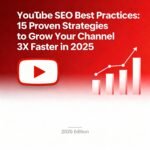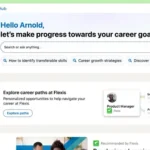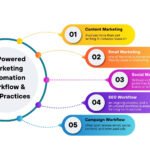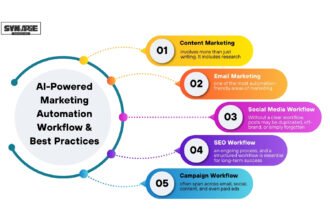Marketing automation isn’t just about saving time anymore—it’s about scaling smarter, personalizing faster, and closing leads with less friction. In 2025, AI-driven tools are rewriting the playbook with real-time targeting, predictive analytics, and omnichannel delivery.
Here’s why this matters:
- For solo founders: Time is your most precious asset. Automate it.
- For B2B marketers: Nurture leads intelligently and boost your pipeline velocity.
- For ecommerce stores: Send cart recovery emails or seasonal promotions without lifting a finger.
- For CMOs: Achieve unified visibility across campaigns, content, and conversions.
Stat: Companies using marketing automation see a 451% increase in qualified leads and a 14.5% increase in sales productivity. (Source: HubSpot & Invesp)
Also Read: What is The Best Email Marketing Platform?
Core Benefits of Marketing Automation in 2025
| Benefit | Why It Matters in 2025 |
| Lead Nurturing & Scoring | Prioritize hot leads using AI—no more guessing. |
| Omnichannel Campaigns | Orchestrate messaging across email, SMS, WhatsApp, and socials. |
| Hyper-Personalization | AI tailors emails, content, and offers to individual user behavior. |
| Real-Time Analytics | Get live performance data with actionable recommendations. |
| Time & Cost Efficiency | Automate repetitive tasks—scale without needing a bigger team. |
My Top Marketing Automation Tools in 2025
Let’s break down the best tools on the market—categorized by features, value, and ideal use cases.
1. HubSpot Marketing Hub
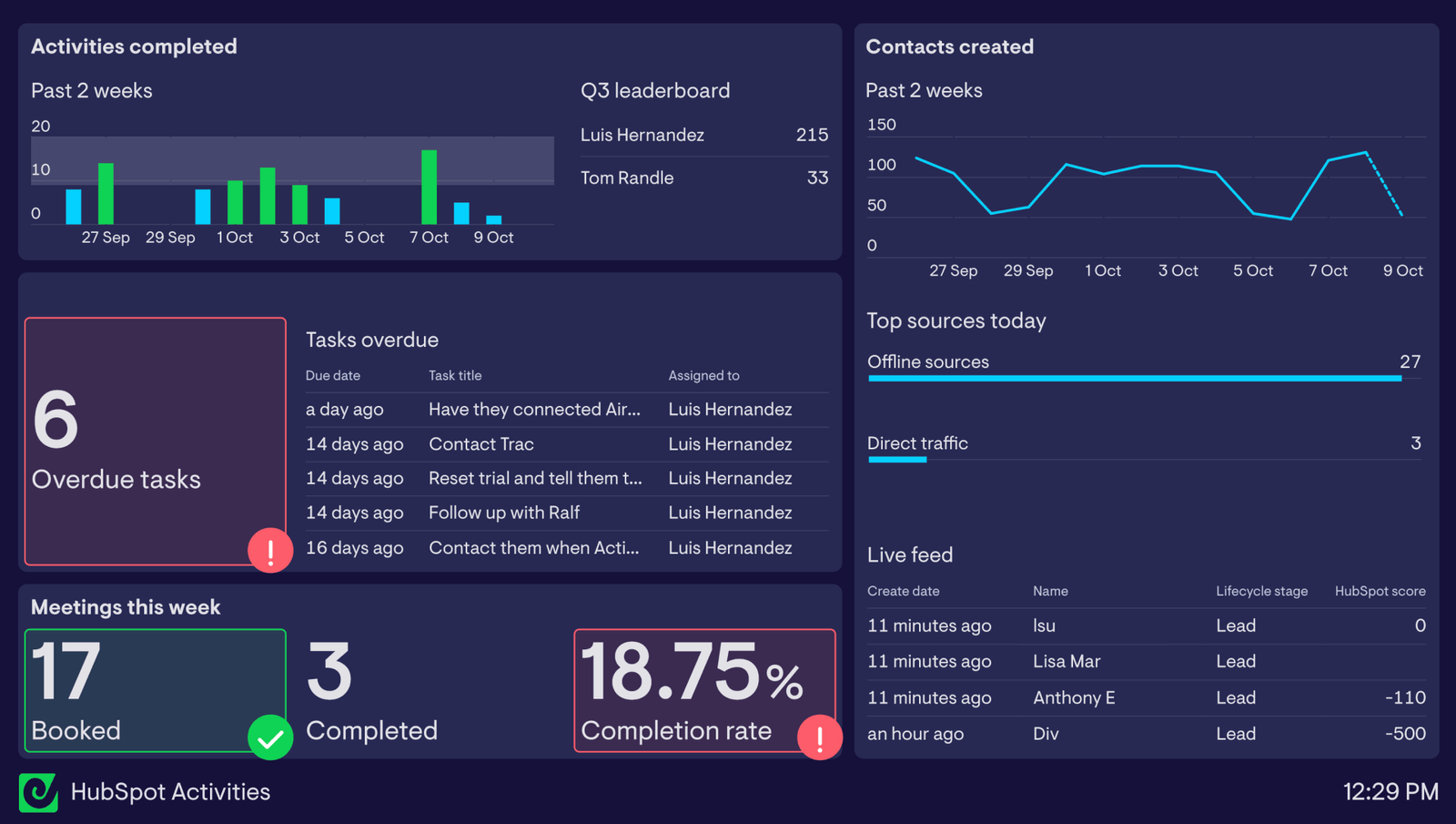
Best for: Businesses of all sizes needing an all-in-one solution
Why it’s a top pick:
HubSpot remains the Swiss army knife of inbound marketing. With its robust CRM integration, drag-and-drop automation builder, and deep analytics, it’s ideal for growing companies looking to centralize their marketing.
Case Example: A mid-sized B2B SaaS company grew demo bookings by 42% in 90 days after implementing HubSpot workflows that combined email automation with dynamic lead scoring.
Key Features:
- Email automation and dynamic content
- Smart CRM segmentation
- AI-generated performance insights
- Blog, landing page, and SEO tools
Pro Tip:
Use lead nurturing workflows to reactivate cold leads or upsell returning customers.
2. ActiveCampaign
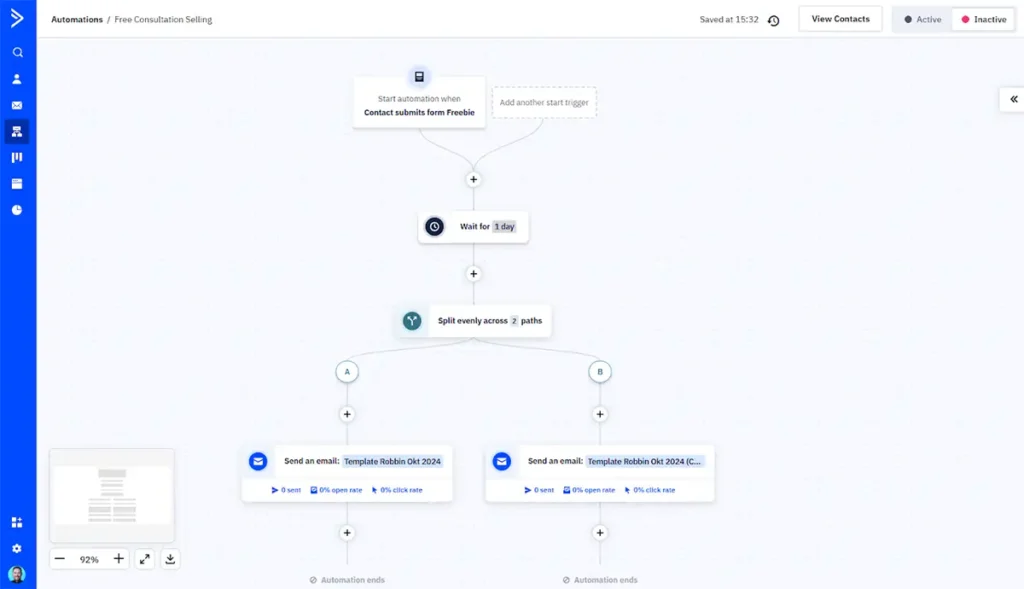
Best for: Small businesses & agencies focused on email journeys
Why marketers love it:
ActiveCampaign shines in customer experience automation. Its visual journey builder lets you set up complex workflows in minutes, while its machine learning optimizes email send times and content performance.
Real Example: An ecommerce brand used predictive sending and dynamic email content to achieve a 59% uplift in email open rates and a 21% bump in revenue.
Key Features:
- Multi-channel automation (email, SMS, site messaging)
- Predictive sending + dynamic content
- Salesforce and Shopify integrations
- Lead scoring & tagging
3. Marketo Engage (Adobe)
Best for: Enterprise B2B marketing teams
Why it excels:
Marketo leads the way in account-based marketing (ABM) and enterprise-level campaign orchestration. It’s fully integrated with the Adobe Experience Cloud, giving marketing teams access to deep behavioral data and advanced personalization.
“We cut our sales cycle time by 30% after launching ABM campaigns through Marketo paired with Salesforce.” — B2B Enterprise CMO (LinkedIn Case Study)
Key Features:
- Advanced analytics dashboard
- Real-time personalization
- ABM tools for large-scale campaigns
- Native Salesforce integration
4. Freshsales by Freshworks
Best for: Mid-sized businesses looking for CRM + automation
What makes it stand out:
Freshsales combines sales automation, email marketing, and behavioral analytics into one slick interface. Perfect for teams looking to align marketing and sales.
Key Features:
- Website tracking + behavioral triggers
- AI-based lead scoring
- Built-in email templates & sequences
- Unified CRM and campaign dashboard
5. LeadSquared
Best for: Omnichannel lead capture and mobile-first teams
Why it’s growing fast:
LeadSquared is beloved by real estate firms, EdTech startups, and service businesses for its mobile-friendly automation and omnichannel drip campaigns.
Key Features:
- WhatsApp, SMS, email & Facebook automation
- Custom landing page builder
- Field sales app with geotracking
- Lead funnel reports
Case Study: An Indian university automated all its admissions campaigns via LeadSquared, increasing applicant conversion by 72%.
6. Pardot (Salesforce Marketing Cloud)
Best for: B2B teams already using Salesforce
What makes it great:
Pardot brings advanced segmentation, Salesforce-native CRM sync, and data-rich analytics tailored for long buying cycles.
Key Features:
- Engagement history dashboards
- Seamless Salesforce sync
- A/B testing for B2B campaigns
- Campaign ROI tracking
7. Numerous (AI in Spreadsheets)
Best for: Marketers who love working inside spreadsheets
Why it’s innovative:
Numerous is not your typical tool—it turns Google Sheets and Excel into AI-powered marketing engines, letting you do everything from sentiment analysis to content generation right in your spreadsheet.
Key Features:
- AI for keyword clustering & SEO outlines
- Campaign tracking templates
- Performance modeling in sheets
8. Storylane
Best for: SaaS brands and product-led growth teams
Why it’s unique:
Storylane helps marketers automate interactive product demos—so prospects can explore your product without booking a call. This is a game-changer for PLG (Product-Led Growth) companies.
SaaS startup saw a 48% increase in demo-to-signup conversions using Storylane’s no-code walkthroughs.
Key Features:
- Guided demo builder
- Real-time usage tracking
- CRM & HubSpot integration
2025 Marketing Automation Trends You Can’t Ignore
| Trend | What It Means |
| AI-Powered Personalization | Predictive recommendations + tailored content in real-time |
| Omnichannel Syncing | Coordinate messages across SMS, email, WhatsApp, social, and more |
| Conversational Marketing | Chatbots + live chat + AI assistants built into campaigns |
| Zero-Click Reporting | Dashboards that give you insights before you even ask |
| Voice & Video Automation | Voice campaigns + auto-generated video from text prompts |
According to Salesforce, 77% of marketers now use AI-powered automation in at least one marketing function. (Source: Digital Silk)
ROI + Industry Stats That Matter
| Metric | Value |
| Avg ROI per $1 spent on automation | $5.44 |
| Marketers using automation for personalization | 77% |
| Companies automating full customer journeys | 40%+ |
| Increased sales productivity w/ automation | 14.5% |
| Time saved weekly on repetitive tasks | 6–10 hours per team member |
Comparison Table: Top Tools in 2025
| Tool | Ideal For | Key Features | CRM Integration | AI Capabilities | Pricing |
| HubSpot | All-in-one | Email, CRM, SEO, analytics | ✅ | ✅ | Subscription |
| ActiveCampaign | Email-heavy campaigns | Visual builder, segmentation, SMS | ✅ | ✅ | Subscription |
| Marketo | Enterprise B2B | ABM, personalization, analytics | ✅ | ✅ | Subscription |
| Freshsales | Sales-marketing synergy | Triggers, CRM, email builder | ✅ | ✅ | Subscription |
| LeadSquared | Mobile-first lead gen | Omnichannel, landing pages, mobile | ✅ | ✅ | Subscription |
| Pardot | Salesforce B2B | Engagement scoring, ROI tools | ✅ | ✅ | Subscription |
| Numerous | Spreadsheet users | Sentiment analysis, campaign tracking | ❌ | ✅ | Subscription |
| Storylane | Product demos (SaaS/PLG) | No-code walkthroughs, analytics | ❌ | ✅ | Subscription |
Takeaways: What’s the Right Tool for You?
- Solo Entrepreneur? Start with ActiveCampaign or Freshsales for balance and simplicity.
- Running a SaaS or PLG company? Storylane and HubSpot are your power combo.
- Need enterprise-level ABM? Go with Marketo or Pardot.
- Spreadsheet wizard? Let Numerous do the AI heavy lifting without leaving Excel.
Next Steps + CTA
Don’t just automate—optimize. Pick one tool that fits your growth stage and run a 30-day test. Measure results. Then scale.
Looking for a free template to map your automation strategy?
Download our 2025 Marketing Automation Strategy Canvas
Conclusion: Automate Intelligently, Grow Exponentially
Marketing automation in 2025 is no longer a luxury—it’s a growth essential.
Whether you’re a solo entrepreneur juggling 10 tasks at once, a CMO looking to align cross-functional teams, or a startup scaling lead gen without burning out your sales reps—there’s a tool tailored for you.
AI is now the core engine, not just a buzzword.
Omnichannel is non-negotiable, because customers move fluidly between platforms.
And personalization at scale is what separates winners from noise-makers.
Key takeaway:
Pick a tool that aligns with your business goals, your current tech stack, and—crucially—your team’s skill level. Then run your first automation. Measure. Tweak. Scale.
Still stuck?
Start simple: automate your email sequences and build from there. The ROI will speak for itself.
“Automation doesn’t replace marketers—it supercharges them.”
Frequently Asked Questions on Best Marketing Automation Tools in 2025
What is marketing automation software, exactly?
It’s software that automates repetitive marketing tasks like sending emails, segmenting audiences, running social media campaigns, or tracking leads—often powered by AI for smarter execution.
Which tool is best for small businesses or solopreneurs?
ActiveCampaign and Freshsales are great entry-level options. They’re intuitive, budget-friendly, and offer strong automation without overwhelming features.
I run an ecommerce store—what should I look for in a tool?
Go for omnichannel support (email + SMS + WhatsApp), behavioral tracking, and cart recovery features. Tools like LeadSquared and Klaviyo (not listed here, but strong in ecommerce) are great picks.
What’s the difference between HubSpot and Marketo?
HubSpot is ideal for growing SMBs and mid-market brands looking for an all-in-one solution. Marketo is best for enterprise-level, ABM-heavy teams needing deep integration and complex workflows.
Are these tools beginner-friendly?
Yes—most offer drag-and-drop interfaces, tutorials, and templates. Start with basic workflows and scale as you learn.
Do I need to know coding to use marketing automation tools?
Not at all. Many tools (like HubSpot, ActiveCampaign, or Numerous) are no-code or low-code. They’re built with marketers in mind—not developers.
How do I measure the ROI of marketing automation?
Track metrics like lead conversion rate, email open/click rates, customer acquisition cost (CAC), and time saved on repetitive tasks. Many tools offer built-in dashboards.
Can marketing automation replace human marketers?
No—and it shouldn’t. Automation handles the repetitive stuff. Strategy, creativity, empathy, and storytelling still require a human touch.


